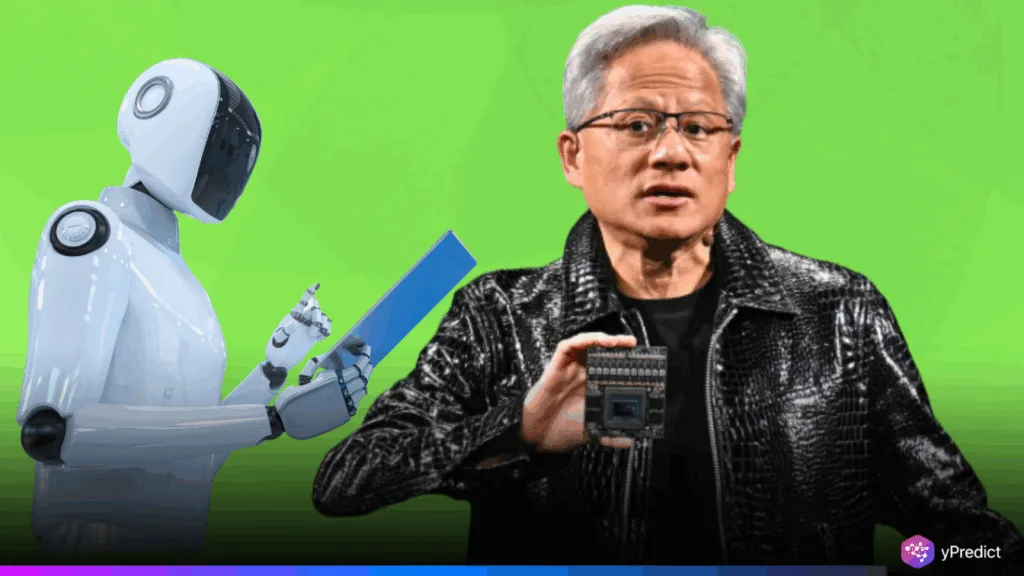
Machines may be taking away parts of our jobs, but that is just as well because they are also creating jobs. And rapidly at that. According to NVIDIA CEO Jensen Huang, who stated this during the All-In Summit 2024. Currently, 100 percent of NVIDIA employees are utilizing AI, including chip designers, software engineers, and anyone in the industry. Huang says that it is not replacing workers—it is giving them power. His statements are not isolated to larger predictions. It is estimated that by the end of 2025, 97 million new jobs will be facilitated by AI, according to the World Economic Forum. However, there are other factors, such as job loss and skills neutralization. This complicates the situation, necessitating reskilling and workforce adjustment on a global level.
NVIDIA CEO: How 100% of Employees Use AI.
Huang spoke and made this point clear in 2024 at the All-In Summit, when she said AI is not taking jobs; it is transforming the ways we do work. Addressing an audience of technology executives, Huang talked about a company that is entirely integrated with AI. He said every employee applies AI. It causes them to be quicker, wiser, and more efficient.
The architects of the chips in the company employ AI to optimize and simulate circuits. Testing and debugging are being automated by software teams. Even HR and finance enjoy the benefits of AI-fueled analytics. According to Huang, such transformation does not get rid of roles but rather increases them. Workers do not frequently spend time on repetitive activities; they instead focus on strategy, design, and innovation. The AI does not employ the worker; it is the instrument. And, as Huang puts it, that very tool is creating new job titles, new processes, and completely new job sectors.
97 Million Jobs? Projections and Challenges
This optimism is not vain on the part of Huang. The World Economic Forum estimates that AI will generate 97 million roles by 2025, including those of an AI trainer, ethicist, and data scientist. This is supported by research conducted by McKinsey, National University, and PwC, indicating that there was a swift increase in the need for technical and AI-adjacent skills. Such processes include the implementation of AI systems even in such spheres as agriculture and logistics that should be controlled, designed, and ethically regulated by humans.
There is also a downside, though. Secular jobs and low-level jobs remain threatened. According to a McKinsey study conducted in January 2025, 60 percent of the dislocated workers do not have the skills to support the emerging AI position. It does not happen automatically; the investment in education and training, and time replaces them. And even limit occupations that are newly emerging, such as AI content moderators or feedback annotators, to being lower-paid and with minimal growth potential, which is questionable in terms of third-party job quality and equity.
AI’s Net Job Effect Depends on What We Do Next
The take of Jensen Huang, that AI generates employment, has data supporting it, but this is not entirely guaranteed. Indeed, the AI hype is creating demand in industries. It is true; there is an increase in productivity. However, the transition is not smooth. Losing jobs, reskilling divides, and job polarization continue to be real threats. The answer to this is based on the responses of governments, businesses, and educators. AI is neither a slayer of jobs nor a lifesaver; it is a utility. It can either open opportunities or reduce them, according to how we use it. In the meantime, the NVIDIA CEO says that it provides an argument that the next era of human labor can be unlocked when AI is utilized appropriately.






